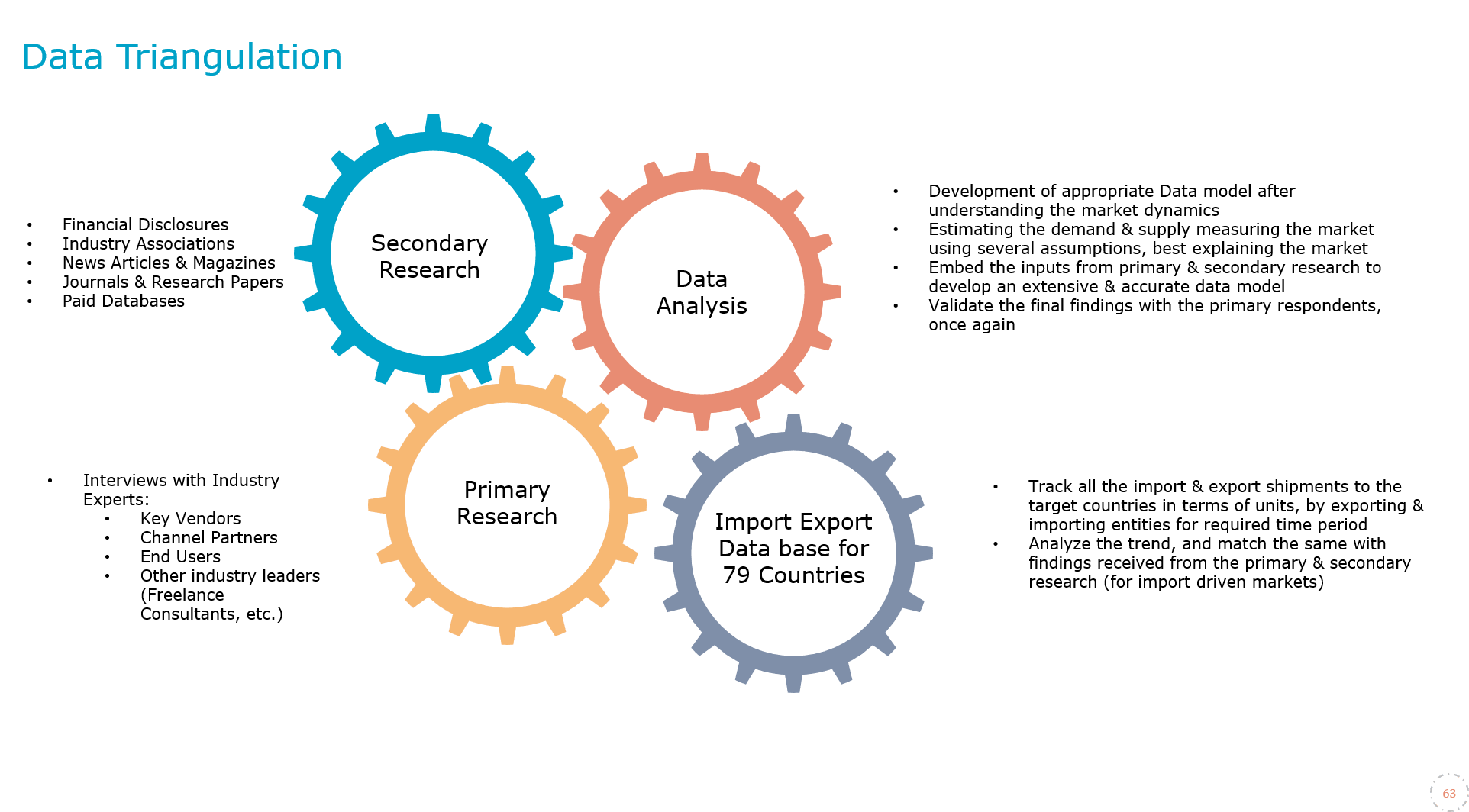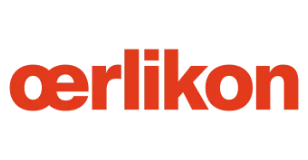
Global Silicone Textile Softener Market Research Report: Forecast (2022-27)
By Fabric Type (Cotton, Wool, Silk, Polyester, Nylon, Other Synthetic Fiber), By Type (Inactive Silicone Softener, Active Silicone Softener, Modified Silicone Softener), By Region ...(North America, South America, Europe, Asia-Pacific, Middle East & Africa), By Competitors (Cosmo Speciality Chemicals, Tian Sheng, Nicca, Momentive Performance Materials Inc., Fineotex, Dow Chemicals, ShinEtsu, Wacker Chemicals AG, Sarex Chemicals, Rudolf Group) Read more
- Chemicals
- Jan 2022
- Pages 207
- Report Format: PDF, Excel, PPT
Market Definition:
Silicone textile softener is a finishing agent used for improving the physical characteristics like durability, flexibility, softness, etc., of cotton, wool, silk, polyester, nylon, and other fabrics, through fibre strengthening and reduction in abrasion. Silicone textile softener are a finishing agent as they are water insoluble and have to be applied after emulsification and dissolution in organic solvents.
Market Insights:
The Global Silicone Textile Softener Market is projected to grow at a considerable CAGR during the forecast period, i.e., 2022-27. The textile sector worldwide has been evolving continuously in major countries like China, India, the US, and European Union, mainly due to rapid advancements in technologies and industrialization, enabling modern installation for efficient fabric production. As a result, it is one of the key factors driving the demand for silicone textile softeners.
The ability of silicone textile softeners to provide softness & smoothness, abrasion resistance, elasticity, wrinkle resistance, etc., to the fabric has positively impacted the growth of the silicone textile softener market during 2017-20. Besides, various plans of the leading companies to introduce new fabric production plants in developing countries, such as Guatemala, Algeria, etc., have positively influenced the demand for silicone textile softeners in recent years and are projected to contribute to the overall market growth during 2022-27.
| Report Coverage | Details |
|---|---|
| Study Period | Historical Data: 2017-20 |
| Base Year: 2021 | |
| Forecast Period: 2022-27 | |
| Regions Covered | North America: USA, Canada, Mexico |
| Europe: Germany, The UK, France, Spain, Italy and Others | |
| Asia-Pacific: China, India, Japan | |
| South America: Brazil, and Argentina | |
| Middle East & Africa: UAE, Saudi Arabia, South Africa | |
| Key Companies Profiled | Cosmo Speciality Chemicals, Tian Sheng, Nicca, Momentive Performance Materials Inc., Fineotex, Dow Chemicals, Shin-Etsu, Wacker Chemicals AG, Sarex Chemicals, Rudolf Group |
| Unit Denominations | USD Million/Billion |
Impact of Covid-19 on the Global Silicone Textile Softener Market
In 2020, the textile industry has been among the worst-hit sectors due to the Covid-19 pandemic. With governments’-mandated factory closures worldwide, the market witnessed adverse disruptions since it did not fall under "vital" goods & services.
Moreover, the lockdown imposition resulted in a temporary shutdown of manufacturing units, reduced import & export orders, and non-availability of skilled workers, along with production delays. Besides, the stringent movement restrictions also negatively impacted the market due to low consumer demand through offline platforms.
India, China, Bangladesh, & Vietnam are the major countries where the market suffered significant supply chain disruptions & suspended manufacturing activities. As a result, it led to the cancellation of contracts and trouble obtaining raw materials from China, i.e., the source of silicone textile softeners.
Market Segmentation
Based on the Fabric Type:
- Cotton
- Wool
- Silk
- Polyester
- Nylon
- Other Synthetic Fiber
Of all Fabric Types, Cotton encapsulated a significant share of the Global Silicone Textile Softener Market during 2017-21. Uses of cotton are maximized compared to other fabrics in the textile industry. Almost half of all textiles comprise cotton due to its burgeoning demand from consumers and properties like versatility, hypoallergenic, low maintenance, comfort, and eco-friendliness that have captured wide acceptance globally.
Levi Strauss, H&M, Nike, Gap, etc., are some global players contributing to the expanding market of cotton fabric-based products. To maintain the quality & soft finish in cotton and its blended fabrics, companies have adopted silicone textile softeners owing to their performance properties, such as stretch recovery, crease, etc. As a result, the increased adoption of cotton fabrics in the textile industry has directly impacted the global silicone textile softener market during the historical period. For Instance:
- In 2018, Italy imported the largest cotton fabric in Europe for the textile industry. Similarly, Portugal’s cotton imports have surged at an average rate of 2% per year, which indicates the significant utilization of cotton fabrics in the textile industry across Italy and, in turn, contributes to the growing market share of silicone textile softeners.
Based on Type:
- Inactive Silicone Textile Softeners
- Active Silicone Textile Softeners
- Modified Silicone Textile Softeners
Modified Silicone Textile Softeners are projected to grab the largest market share during 2022-27. The textile finishing industry is rapidly expanding with the introduction of new technologies & fibers to provide a higher level of comfort & ecological green products to consumers. Modified Silicone Textile Softeners are the most widely used fabric softeners within the textile industry since they suffice the requirements of high-grade finishing of fabrics & enhance their hydrophilic, oil, antistatic properties. Textile companies have been producing recycled Silicone Textile Softeners by transforming their operations from a linear to a circular economy through the adoption of cross-industry collaborations. For instance:
- In 2020, CHT Group introduced TUBINGAL RISE, the first textile softener based on recycled silicones made from 60% recycled & reprocessed silicone waste and renewable bio-based emulsifiers. This hydrophilic recycled Silicone Textile Softener fulfills the extensive requirements for textile standards like the bluesign®, ZDHC, GOTS, & Standard 100 by OEKO-TEX. Moreover, this softener has been specifically designed to produce Global Recycled Standard (GRS) certified textile products.
Regional Landscape
Based on Regions, the Global Silicone Textile Softener Market expands across:
- North America
- South America
- Europe
- Asia-Pacific
- Middle East & Africa
Geographically, among all regions, Asia-Pacific, a dominant textile manufacturer worldwide, acquired a substantial share in the Silicone Textile Softeners Market during 2017-21. The regional market growth was observed, mainly due to the burgeoning textile manufacturing capacity across Asia-Pacific. Exports of clothing have been a major contributor to the increasing number of manufacturing units in countries like India, China, Vietnam, and Indonesia.
Furthermore, Asia-Pacific has remained a hub of outsourced manufacturing for multinational companies, such as Nike, Adidas, Old Navy, etc. The new-age fashion trends have made a significant impact on the region's textile industry, which, in turn, has boosted the Silicone Textile Softeners Market. Additionally, Teenage fashion and clothing trends & choices are likely to be a consequential factor impacting the market expansion in the coming years.
- According to the Ministry of Textiles’ Cotton Textiles Export Promotion Council of India, cotton fabric has been a widely used fabric in the textile industry for manufacturing clothes across Asia-Pacific, simply due to the wide acceptance of cotton in the regional clothing preferences. It has further boosted the demand for silicone textile softeners owing to their properties, such as high water absorbency, strength, durability, softness, and biodegradability. Cotton fabrics are treated by using silicone textile softeners to impart crease-resistant finishing.
Across Asia-Pacific, India was a prime contributor to the market growth in 2020. The textile industry of India has been significantly booming due to massive investments in the previous years to increase the production capacity for satiating the domestic consumption and the export demand worldwide. The increasing market growth of silicone textile softeners in India attributes principally to their integration in the textile industry to improve tear strength & shade enhancements of fabrics. For Instance:
- In 2021, Indo Count Industries Ltd. (ICIL) invested approximately USD 27 Million in the expansion of its production capacity to fulfill the burgeoning consumer demand.
- The same year, Welspun India collaborated with DuPont Biomaterials for expanding & strengthening their presence in the global market and exporting textile products as per requirements.
Key Trend in the Global Silicone Textile Softener Market
- Mass Production in the Textile Industry Owing to Fast Fashion
The production pattern in the textile industry has changed over the past few years since companies have started manufacturing a high volume of clothing due to the adoption of fast fashion, i.e., the bulk production of clothes for a short period of usage. This trend has hit the clothing sector, mainly due to changes in consumer buying behavior, coupled with the surging disposable income of customers. The youth population is attracted to unique, trendy, & affordable clothes, which is another crucial factor attributed to the soaring fast fashion pattern across the textile industry.
Market Dynamics:
Key Driver: Surging Production of Cotton Fabric-based Clothing
Cotton plays a vital role in the textile industry for manufacturing clothes. About 75% of clothing contains some proportion of cotton owing to its high availability and being the preferred choice of consumers.
Silicone textile softeners help maintain creases in cotton clothes. Hence, with the surging production of cotton-based fabrics, silicone textile softeners have also witnessed significant growth in their demand in recent years.
- According to the Ministry of Textiles, the Government of India, the country generated revenues to the tune of USD 10 Billion in 2021 by exporting cotton fabric-based clothes & handloom products.
- Moreover, according to the US Department of Agriculture, the country produced approximately 20 million bales of cotton, wherein nearly 78% was used in the textile industry for the production of clothes based on cotton in 2019.
Hence, the availability of cotton and its maximized use across the textile industry while manufacturing clothes indicates a significant expansion of the silicone textile softener market in the years to come.
Recent Developments by the Leading Market Players
- In 2021, Nextil Group, a textile company in Spain, announced its plan to launch a new fabric production plant in Guatemala in 2023. This plant would cover an area of 25,000 square meters.
- In 2018, a Turkish-Algerian joint venture introduced a textile production facility in the northwestern Algerian province of Relizane. The facility was named TAYAL SPA and costs around USD 1.5 billion.
Frequently Asked Questions
- Introduction
- Product Definition
- Research Process
- Market Segmentation
- Assumptions
- Preface
- Executive Summary
- Impact of COVID-19 on Global Silicone Textile Softeners Market
- Global Silicone Textile Softeners Market Trends & Insights
- Global Silicone Textile Softeners Market Dynamics
- Impact Analysis
- Drivers
- Challenges
- Global Silicone Textile Softeners Market Hotspots & Opportunities
- Global Silicone Textile Softeners Market Regulations, Policies & Standards
- Global Silicone Textile Softeners Market Supply Chain Analysis
- Global Silicone Textile Softeners Market Outlook, 2017-2027F
- Market Size & Analysis
- By Revenues (USD Million)
- By Volume (Tons)
- Market Share & Analysis
- By Type
- Inactive Silicone Softener
- Active Silicone Softener
- Modified Silicone Softener
- By Fabric Type
- Cotton
- Wool
- Silk
- Polyester
- Nylon
- Other Synthetic Fiber
- By Region
- North America
- South America
- Europe
- Middle East & Africa
- Asia Pacific
- By Company
- Revenue Shares
- Competition Characteristics
- Competitor Placement in MarkNtel Quadrant
- By Type
- Market Size & Analysis
- North America Silicone Textile Softeners Market Outlook, 2017-2027F
- Market Size & Analysis
- By Revenues (USD Million)
- By Volume (Tons)
- Market Share & Analysis
- By Type
- By Fabric Type
- By Country
- The US
- Canada
- Mexico
- The US Silicone Textile Softeners Market Outlook, 2017-2027F
- Market Size & Analysis
- By Revenues (USD Million)
- By Volume (Tons)
- Market Share & Analysis
- By Type
- By Fabric Type
- Market Size & Analysis
- Canada Silicone Textile Softeners Market Outlook, 2017-2027F
- Market Size & Analysis
- By Revenues (USD Million)
- By Volume (Tons)
- Market Share & Analysis
- By Type
- By Fabric Type
- Market Size & Analysis
- Mexico Silicone Textile Softeners Market Outlook, 2017-2027F
- Market Size & Analysis
- By Revenues (USD Million)
- By Volume (Tons)
- Market Share & Analysis
- By Type
- By Fabric Type
- Market Size & Analysis
- Market Size & Analysis
- South America Silicone Textile Softeners Market Outlook, 2017-2027F
- Market Size & Analysis
- By Revenues (USD Million)
- By Volume (Tons)
- Market Share & Analysis
- By Type
- By Fabric Type
- By Species
- By Type
- By End User
- By Country
- Brazil
- Argentina
- Rest of South America
- Brazil Silicone Textile Softeners Market Outlook, 2017-2027F
- Market Size & Analysis
- By Revenues (USD Million)
- By Volume (Tons)
- Market Share & Analysis
- By Type
- By Fabric Type
- Market Size & Analysis
- Argentina Silicone Textile Softeners Market Outlook, 2017-2027F
- Market Size & Analysis
- By Revenues (USD Million)
- By Volume (Tons)
- Market Share & Analysis
- By Type
- By Fabric Type
- Market Size & Analysis
- Market Size & Analysis
- Europe Silicone Textile Softeners Market Outlook, 2017-2027F
- Market Size & Analysis
- By Revenues (USD Million)
- By Volume (Tons)
- Market Share & Analysis
- By Type
- By Fabric Type
- By Country
- Germany
- The UK
- France
- Italy
- Spain
- Rest of Europe
- Germany Silicone Textile Softeners Market Outlook, 2017-2027F
- Market Size & Analysis
- By Revenues (USD Million)
- By Volume (Tons)
- Market Share & Analysis
- By Type
- By Fabric Type
- Market Size & Analysis
- The UK Silicone Textile Softeners Market Outlook, 2017-2027F
- Market Size & Analysis
- By Revenues (USD Million)
- By Volume (Tons)
- Market Share & Analysis
- By Type
- By Fabric Type
- Market Size & Analysis
- France Silicone Textile Softeners Market Outlook, 2017-2027F
- Market Size & Analysis
- By Revenues (USD Million)
- By Volume (Tons)
- Market Share & Analysis
- By Type
- By Fabric Type
- Market Size & Analysis
- Italy Silicone Textile Softeners Market Outlook, 2017-2027F
- Market Size & Analysis
- By Revenues (USD Million)
- By Volume (Tons)
- Market Share & Analysis
- By Type
- By Fabric Type
- Market Size & Analysis
- Spain Silicone Textile Softeners Market Outlook, 2017-2027F
- Market Size & Analysis
- By Revenues (USD Million)
- By Volume (Tons)
- Market Share & Analysis
- By Type
- By Fabric Type
- Market Size & Analysis
- Market Size & Analysis
- Middle East & Africa Silicone Textile Softeners Market Outlook, 2017-2027F
- Market Size & Analysis
- By Revenues (USD Million)
- By Volume (Tons)
- Market Share & Analysis
- By Type
- By Fabric Type
- By Country
- Saudi Arabia
- UAE
- South Africa
- Rest of Middle East & Africa
- Saudi Arabia Silicone Textile Softeners Market Outlook, 2017-2027F
- Market Size & Analysis
- By Revenues (USD Million)
- By Volume (Tons)
- Market Share & Analysis
- By Type
- By Fabric Type
- Market Size & Analysis
- UAE Silicone Textile Softeners Market Outlook, 2017-2027F
- Market Size & Analysis
- By Revenues (USD Million)
- By Volume (Tons)
- Market Share & Analysis
- By Type
- By Fabric Type
- Market Size & Analysis
- South Africa Silicone Textile Softeners Market Outlook, 2017-2027F
- Market Size & Analysis
- By Revenues (USD Million)
- By Volume (Tons)
- Market Share & Analysis
- By Type
- By Fabric Type
- Market Size & Analysis
- Market Size & Analysis
- Asia Pacific Silicone Textile Softeners Market Outlook, 2017-2027F
- Market Size & Analysis
- By Revenues (USD Million)
- By Volume (Tons)
- Market Share & Analysis
- By Type
- By Fabric Type
- By Country
- China
- Japan
- India
- Rest of Asia Pacific
- China Silicone Textile Softeners Market Outlook, 2017-2027F
- Market Size & Analysis
- By Revenues (USD Million)
- By Volume (Tons)
- Market Share & Analysis
- By Type
- By Fabric Type
- Market Size & Analysis
- Japan Silicone Textile Softeners Market Outlook, 2017-2027F
- Market Size & Analysis
- By Revenues (USD Million)
- By Volume (Tons)
- Market Share & Analysis
- By Type
- By Fabric Type
- Market Size & Analysis
- India Silicone Textile Softeners Market Outlook, 2017-2027F
- Market Size & Analysis
- By Revenues (USD Million)
- By Volume (Tons)
- Market Share & Analysis
- By Type
- By Fabric Type
- Market Size & Analysis
- Market Size & Analysis
- Global Silicone Textile Softeners Market Key Strategic Imperatives for Growth & Success
- Competition Outlook
- Competition Matrix
- Brand Specialization
- Target Markets
- Target End Users
- Research & Development
- Strategic Alliances
- Strategic Initiatives
- Competition Matrix
- Company Profiles
- Cosmo Speciality Chemicals
- Tian Sheng
- Nicca
- Momentive Performance Materials Inc.
- Fineotex
- Dow Chemicals
- ShinEtsu
- Wacker Chemicals AG
- Sarex Chemicals
- Rudolf Group
- Others
- Disclaimer
MarkNtel Advisors follows a robust and iterative research methodology designed to ensure maximum accuracy and minimize deviation in market estimates and forecasts. Our approach combines both bottom-up and top-down techniques to effectively segment and quantify various aspects of the market. A consistent feature across all our research reports is data triangulation, which examines the market from three distinct perspectives to validate findings. Key components of our research process include:
1. Scope & Research Design At the outset, MarkNtel Advisors define the research objectives and formulate pertinent questions. This phase involves determining the type of research—qualitative or quantitative—and designing a methodology that outlines data collection methods, target demographics, and analytical tools. They also establish timelines and budgets to ensure the research aligns with client goals.
2. Sample Selection and Data Collection In this stage, the firm identifies the target audience and determines the appropriate sample size to ensure representativeness. They employ various sampling methods, such as random or stratified sampling, based on the research objectives. Data collection is carried out using tools like surveys, interviews, and observations, ensuring the gathered data is reliable and relevant.
3. Data Analysis and Validation Once data is collected, MarkNtel Advisors undertake a rigorous analysis process. This includes cleaning the data to remove inconsistencies, employing statistical software for quantitative analysis, and thematic analysis for qualitative data. Validation steps are taken to ensure the accuracy and reliability of the findings, minimizing biases and errors.

4. Data Forecast and FinalizationThe final phase involves forecasting future market trends based on the analyzed data. MarkNtel Advisors utilize predictive modeling and time series analysis to anticipate market behaviors. The insights are then compiled into comprehensive reports, featuring visual aids like charts and graphs, and include strategic recommendations to inform client decision-making









